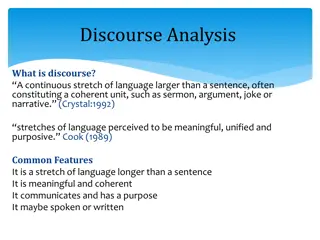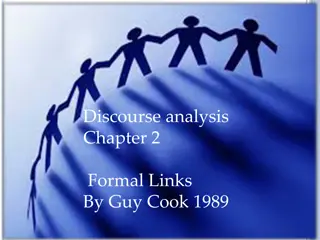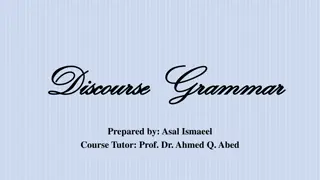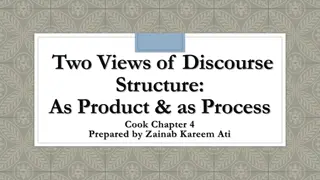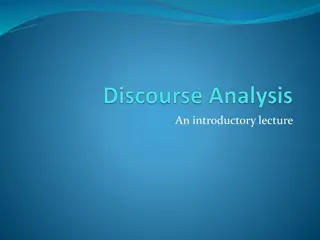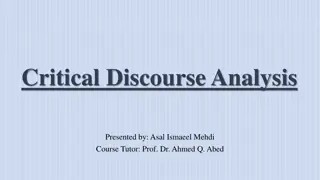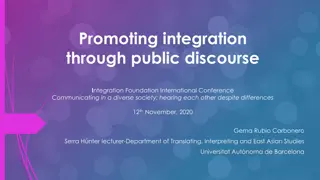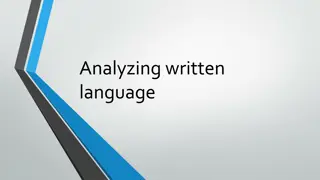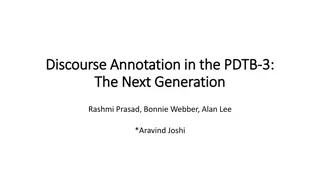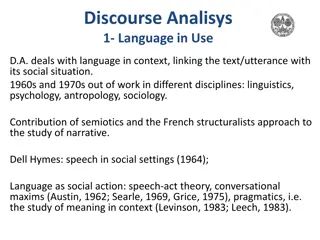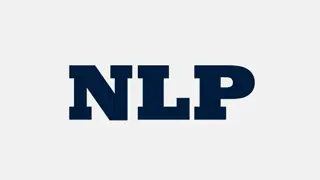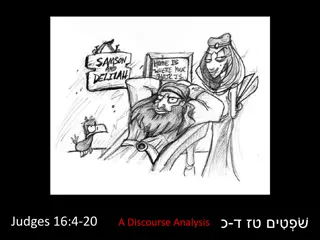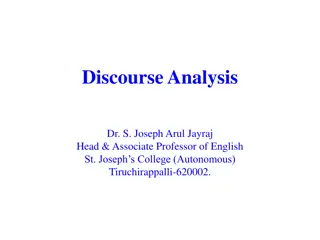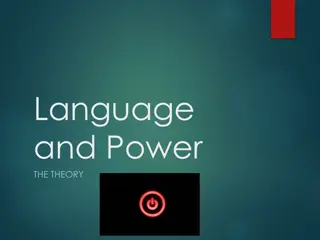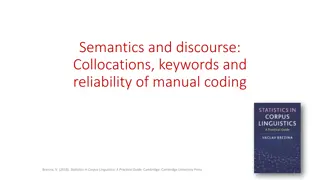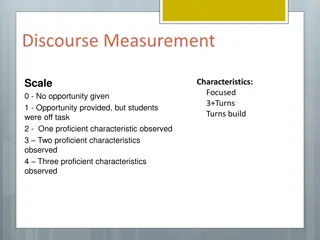Understanding Discourse Analysis: Origins and Definitions
Discourse analysis, a method for analyzing connected speech or writing, was first coined by Zelling Harris in 1952. The term "discourse" has varied meanings and has its roots in Latin. It encompasses extended language units that have unity and purpose. Discourse is one of the four language systems and serves as a bridge between culture and language. The term has evolved over time, emphasizing the significance of language in conveying various meanings and purposes.
Download Presentation

Please find below an Image/Link to download the presentation.
The content on the website is provided AS IS for your information and personal use only. It may not be sold, licensed, or shared on other websites without obtaining consent from the author. Download presentation by click this link. If you encounter any issues during the download, it is possible that the publisher has removed the file from their server.
E N D
Presentation Transcript
WHAT IS DISCOURSE ANALYSIS Ban Ibrahem
The term discourse analysis was first employed by Zelling Harris as the name for a method for the analysis of the connected speech or writing for continuing descriptive linguistics beyond the limit of a single sentence at a time and for correlating culture and language ( Harris 1952)
The word discourse is an elastic term The word discourse has a complex history. It is used in a range of different ways by different theorists. Originally the word discourse comes from Latin, discursus which denote conversations , speech . As a noun it can mean verbal communication, talk, formal speech or writing on a subject and a unit of text used by linguists for the analysis of linguistic phenomena that range over more than one sentence
WHAT IS DISCOURSE IN LANGUAGE? Discourse is one of the four systems of language, the others being vocabulary, grammar and phonology. Discourse has various definitions but one way of thinking about it is as any piece of extended language, written or spoken, that has unity and meaning and purpose.
Etymologically, the word discourse dates back to the 14th century. It is taken from the Latin word discursus which means a conversation (McArthur, 1996). In its current usage, this term conveys a number of significations for a variety of purposes, but in all cases it relates to language, and it describes it in some way.
To start with, discourse is literally defined as a serious speech or piece of writing on a particular subject (Longman Dictionary of Contemporary English, 2001, p.388). In this general sense, it incorporates both the spoken and written modes although, at times, it is confined to speech being designated as a serious conversation between people . This restriction is also implied in the word when it is used as a verb
TWO MAIN AREA IN DA It is centrally occupied with two main linguistic functions: The interpersonal Textual
LINGUISTIC FUNCTION OF DA Interpersonal Textual Because it focuses on Because it also focuses the way in which we on our ability to use language as a construct coherent/ means f interacting cohesive texts Texts can be written or spoken with others
Types of Discourse While every act of communication can count as an example of discourse, some scholars have broken discourse down into four primary types: argument, narration, description, and exposition. Many acts of communicate include more than one of these types in quick succession.
Argument: A form of communication meant to convince an audience that the writer or speaker is correct, using evidence and reason. Narration: This form of communication tells a story, often with emotion and empathy involved. Description: A form of communication that relies on the five senses to help the audience visualize something. Exposition: Exposition is used to inform the audience of something with relatively neutral language, i.e., it s not meant to persuade or evoke emotion.



